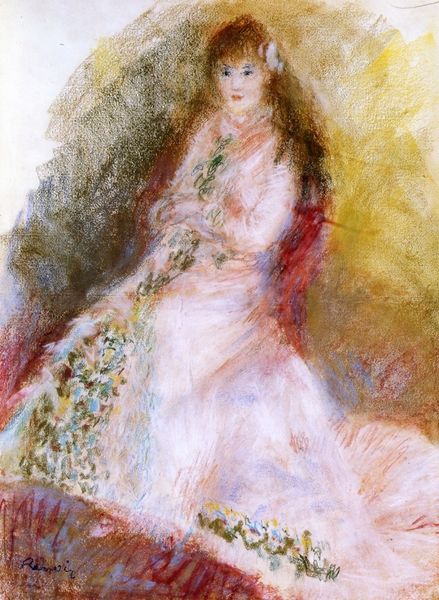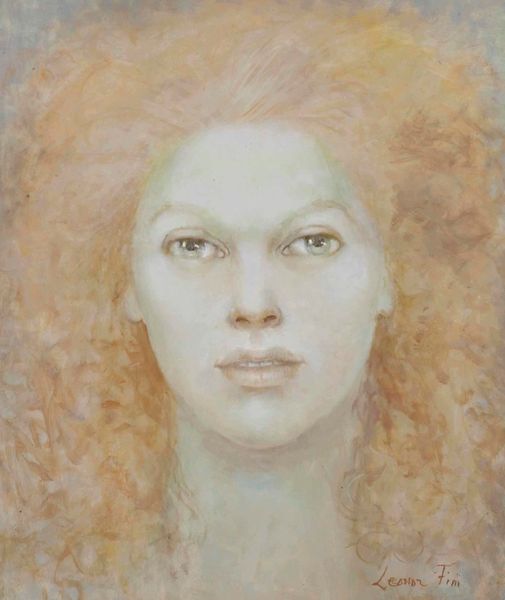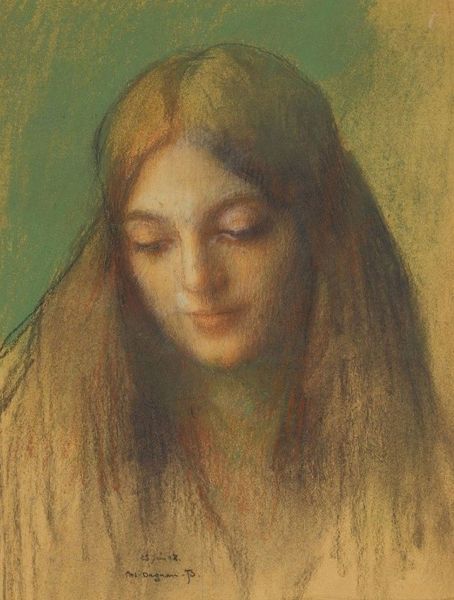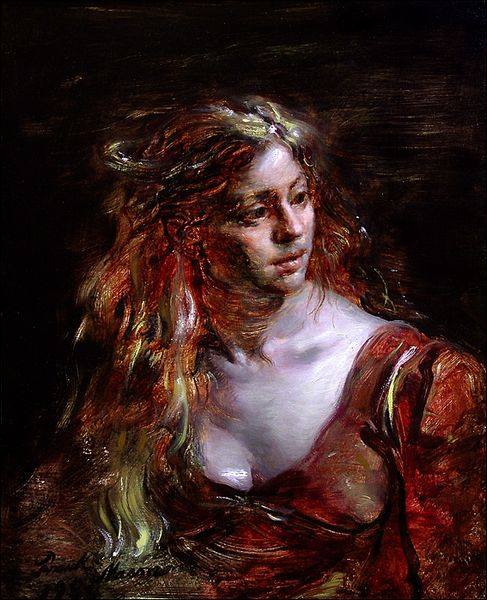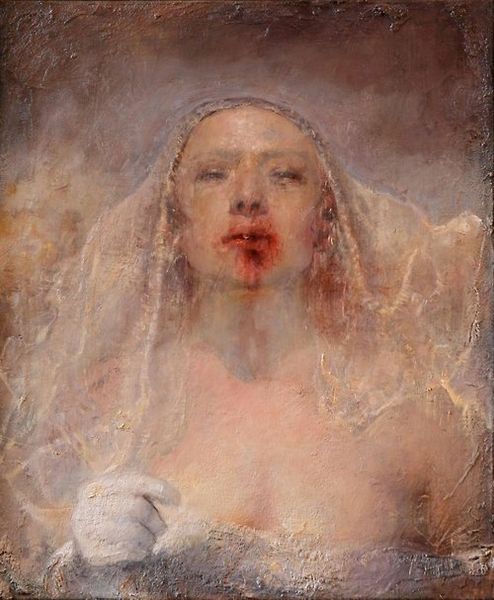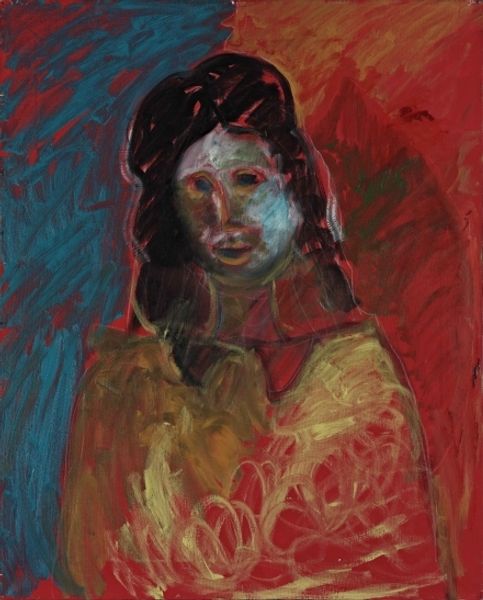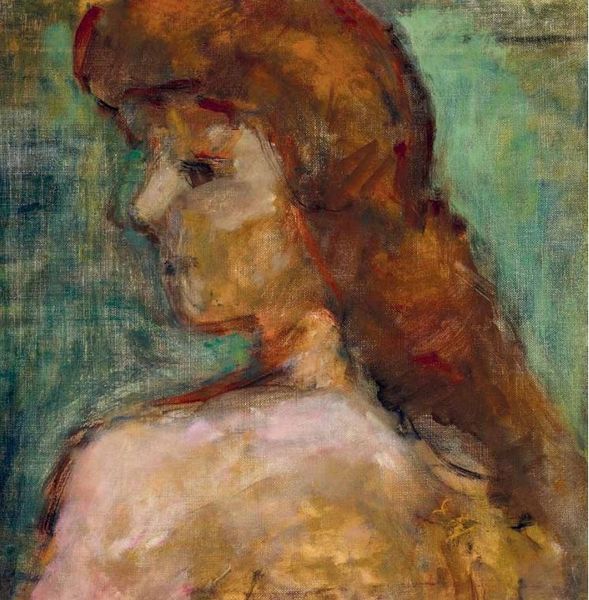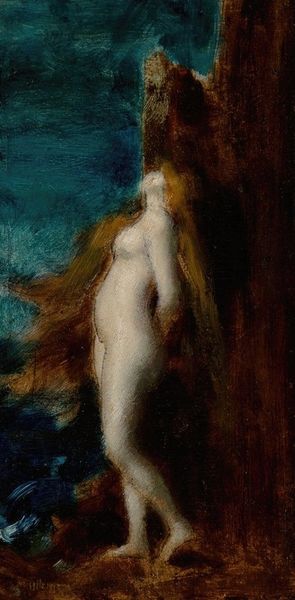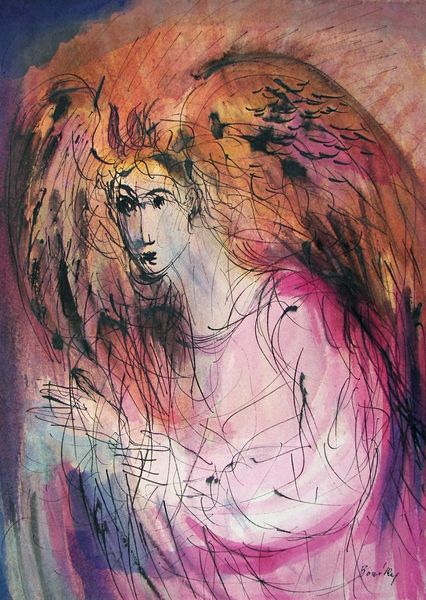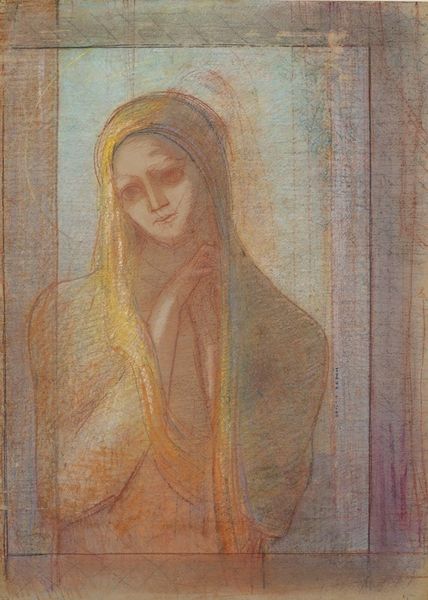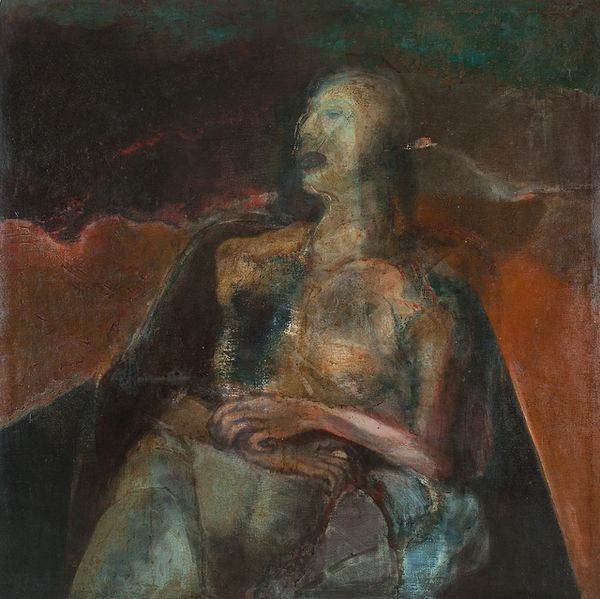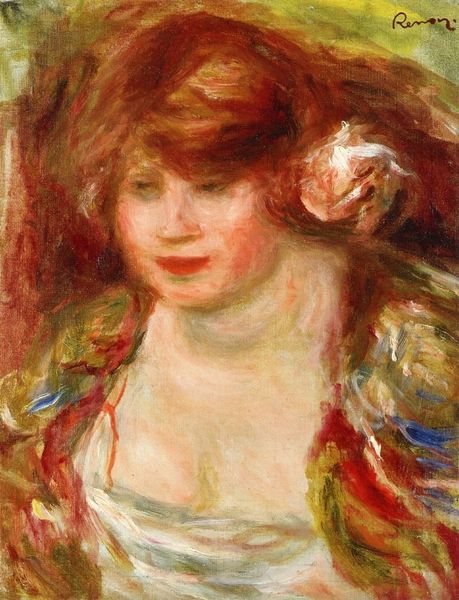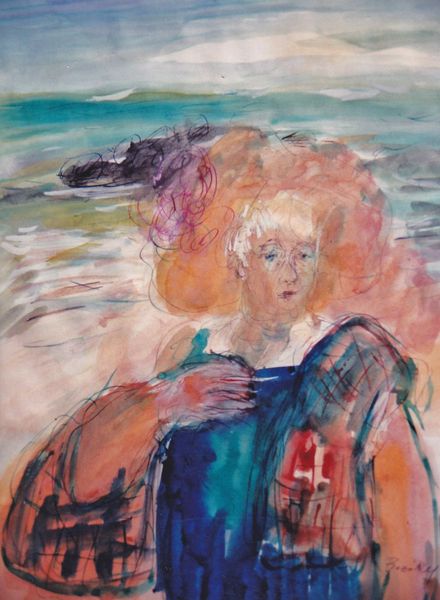
#
abstract painting
#
possibly oil pastel
#
oil painting
#
acrylic on canvas
#
underpainting
#
painterly
#
mythology
#
painting painterly
#
animal drawing portrait
#
portrait drawing
#
watercolor
Copyright: Public Domain: Artvee
Curator: Here we have Alice Pike Barney's painting titled "Circe." While the precise dating of this piece remains elusive, it's a captivating interpretation of the mythical sorceress. What strikes you initially? Editor: It's ethereally unsettling. There's a languid quality to Circe, with that flowing red hair and knowing gaze, but also a raw, almost primal energy emanating from the figure, especially coupled with what looks like a beast resting on her arms. The whole composition feels like a reclamation of power. Curator: Indeed. Barney, deeply involved in Washington D.C.'s artistic circles, often tackled mythological subjects, though she imbued them with a decidedly feminist lens. Circe, typically portrayed as a dangerous enchantress, is reimagined here, less as a monster and more as a powerful woman existing outside patriarchal norms. How do you see this reclamation playing out visually? Editor: It's in the painterly brushstrokes and her confident pose, there is a sense of defiance in her presentation. The rough texture hints at the wildness associated with Circe's island. But what intrigues me further is the possible underpainting or use of what might be watercolor or oil pastels as mediums -- which could represent the multiple layers of female identity and the many different "women" we must be in contemporary society. Curator: Interesting perspective! Historically, Circe's power, stemming from her knowledge of herbs and potions, was often demonized as being unnatural. Barney seems intent on reclaiming this very notion. We must understand it within the history of portraying women through the male gaze to understand that Barney presents an image in opposition to male depictions. This becomes less about sexual threat and more about embracing one's power. Editor: Absolutely. It's a defiant challenge to how female agency is framed, in mythology and contemporary life. The tension in her eyes and pose captures what it might mean for her as an isolated powerful witch, and invites us to think more about what empowerment through independence, sexuality, and intellectual pursuits looks like outside dominant societal structures. She seems comfortable in her choices and is inviting us to do so as well. Curator: Thinking of her in terms of those broader structures is intriguing, since for a painter tied into many art movements of her day, one might understand what it means for Circe, so tied to a period, to communicate today. That element has now further deepened my appreciation for it. Editor: Agreed. Barney uses mythology not to escape, but to offer a vital critique and celebrate female power through centuries. Circe as depicted stands as a lasting call for embracing individual agency against conventional constraints.
Comments
No comments
Be the first to comment and join the conversation on the ultimate creative platform.

